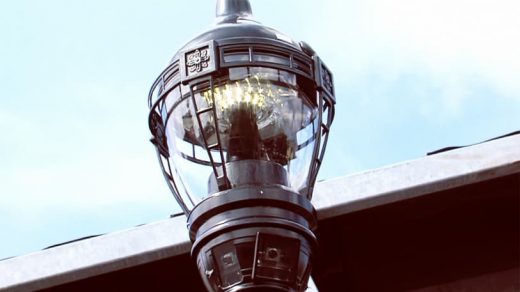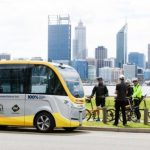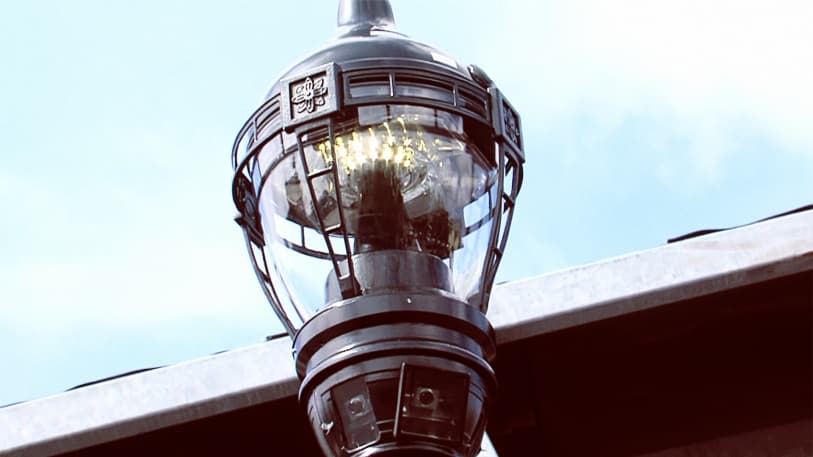GE’s $30 Million Streetlamp Upgrade Illuminates The Rewards And Risks Of Smart Cities
Thousands of new “smart” streetlights to be rolled out across the city of San Diego will be connected to a city-wide network, allowing officials to adjust their brightness and detect outages from afar. But in addition to giving off light, they will also be pulling in information about what’s going on around them.
Last month, San Diego announced it would install a 3,200-node sensor platform in soon-to-be-upgraded streetlights across the city this summer, in what officials say will be the world’s largest smart-city Internet of Things (IoT) network. The $30 million program is part of a deal with General Electric’s Current unit, as the city upgrades 14,000 streetlights to Current’s energy-saving Evolve LED systems.
The streetlamps—equipped with cameras, microphones, and other sensors—will capture data from the surrounding environment in order to track everything from traffic flow and parking spot usage to the levels of pollutants in the air. Eventually, the company says, the lights could support additional sensors and digital tools as the city’s needs evolve.
“When you want to make this an air traffic control system for drones because there’s so many of them flying over the city, you now have an extensible platform to put that in,” says John Gordon, chief digital officer for Current.
A network of this scale—larger than any other known public urban sensor network—naturally raises privacy concerns, especially if it could collect data that could be used to track individuals living in the city. “The key question is, are these sensors gathering information about identifiable people?” says Adam Schwartz, a senior staff attorney with the Electronic Frontier Foundation (EFF). “And if they are, it’s surveillance.”
Schwartz has written about smart cities and privacy in the past, though he says he hasn’t studied the San Diego proposal.
But Current executives emphasize that in ordinary cases, raw audio and video are never transmitted to central servers—current bandwidth concerns alone would make that impractical, says Gordon.
The raw data that could include more personal details will only be stored in temporary buffers on the devices and soon deleted, says GE. City officials say they have no plans to use anything but aggregated and anonymized data, which will be generated by Intel processors within the fixtures. The city says it also intends to make the data available publicly to researchers and others.
“We don’t send back the images—we send back counts of people, speeds of cars, data about air quality,” Gordon says. “It’s the metadata we send back.”
All of the data that’s sent back belongs to the city under the terms of the agreement, allowing agencies to work with startups, university researchers, and others who are equipped to make us of it. That differs from many previous smart city and urban IoT programs, in which data and processing are typically all provided by one vendor, Gordon says.
“The citizens benefit from it, but the citizens have never been able to participate in building those solutions because it was so hard to put real infrastructure in the city to make that work,” he says.
The city hopes to start making data available by the end of the year, potentially holding hackathons to encourage developers to find innovative ways to process the information, says Jen Lebron, press secretary for Mayor Kevin Faulconer. Current will also provide technical support, as well as tools like apps for locating open parking spaces, Gordon says. The company also touts Predix, a cloud-based platform focused on sensors, machinery, and other connected devices that will allow municipal developers tools to access data from the streetlamps.
The savings from the system’s more efficient lighting—estimated to be about $2.4 million a year—are expected to cover the $30 million cost of the project through a 13-year lease purchase agreement, according to city documents. GE’s Current—initially launched as an internal startup focusing on clean energy and digital management tools—reportedly pivoted last year to emphasize connected lighting and energy management tools like those being installed in San Diego. GE made a similar “smart city” push in 2015, touting potential deals with New York and other cities.
The Current ambition is in line with a growing global interest in “smart cities.” Gartner estimates that 1.39 billion connected things will be used by smart cities in 2017, up from 380 million in 2010. According to a 2014 estimate by analyst firm Frost and Sullivan, the total global smart cities market is expected to grow to $1.54 trillion dollars by the end of the decade.
Late last month, GE expanded its reach in the “smart city” market with a deal it signed with AT&T to make the telecom the exclusive reseller of Current’s sensor nodes in the U.S. and Mexico. The arrangement, a press release said, “builds on AT&T’s long-standing relationships with municipalities,” as well as on AT&T’s participation in the Predix platform.
What San Diego’s Sensors Do
San Diego has an ongoing pilot program with ShotSpotter, a service that deploys its own sensors to detect the sound of gunfire and alert police when shots are fired. (Though around the country, some have questioned the efficacy of the sensors and worried about privacy abuses.) The sensors from Current can also be used to trigger ShotSpotter alerts, with the advantage that they’ll be distributed across the city, rather than concentrated in high crime regions, says Gordon. Still, the city doesn’t have any plans to immediately deploy that feature or otherwise expand its ShotSpotter program, Lebron says.
The new streetlamp sensor nodes will relay data through AT&T’s wireless network and will also be able to wirelessly communicate with additional sensors that may be installed later on. The city might add air quality sensors, which would likely be more useful at human nose level than on tops of streetlights, or add additional tools for future applications, Gordon says. Current can also send software updates to the nodes for processing new data or learning from existing feeds in new ways.
Actual raw data will be stored in a temporary buffer at each node, overwritten over time as new data comes in, says Gordon. And data available to developers will never contain any raw images or audio—only data that, say, an object passed by a sensor.
Privacy And Security Questions
Schwartz says the EFF generally advocates that cities adopt rigorous privacy policies for public data collection systems. City governments should also they make sure that officials fully understand the privacy ramifications of sensor technology and allow the public to weigh in before it’s adopted, he says.
“What I can say is, in general, we are anxious that there is a movement going forward at great speed in the name of smart cities that is not slowing down enough to consider the surveillance ramifications,” he says. “We think that cities ought to adopt an ordinance or a law that says before any city agency acquires any technology that is documenting how individual people are living their lives in public places, there needs to be an open, democratic process to decide whether to acquire that technology.”
Lebron stresses that the system’s data collection won’t violate privacy. “The data that will be available online is completely anonymous,” she says.
In San Diego, the city reported a previous pilot program in 2014 didn’t draw any privacy concerns, and the current plan passed the City Council without privacy issues being raised, according to Lebron. The American Civil Liberties Union of San Diego declined to comment about the project, saying it hadn’t yet studied the program in detail, though other affiliates of the organization have expressed skepticism about some smart cities initiatives that could infringe on privacy.
Security experts have also warned that smart city networks can be a rich target for hackers. Some have warned that attacks on smart cities could siphon away potentially sensitive data or interfere with connected infrastructure like traffic and streetlights. AT&T, which is providing network connectivity for the devices, has said its deployment will be “highly secure.”
But researchers stress that addressing the threat will likely require city, state, and federal officials, as well as private contractors, to defend smart networks, especially at their weakest points.
“Preparedness varies widely,” wrote researchers in a paper presented at the 2015 Black Hat security conference. “Some cities have their act together, but others are a snarl of individual fiefdoms built upon homegrown technological houses of cards.”
Lebron emphasizes that the only data transmitted from the sensors will be the processed metadata about events and readings, which will be made available to the public and will, the city and Current hope, prove useful to developers and researchers in surprising ways.
The data may be made available through the city’s existing Open Data Portal or something similar, she says, with details to be hashed out in the coming months.
“We’re outputting data, and then it’s up to developers to do something with that data,” Lebron says.
The San Diego system is expected to be fully installed by fall 2018, and Current is working on a 1,000-light trial with Atlanta, as well as with other cities around the country—including Jacksonville, Cleveland, and Schenectady—on potential future projects. The company has also formed an intelligent lighting partnership with the city of Tianjin, China,.
“We have a pretty rich pipeline of cities that all have been either testing or piloting,” says Maryrose Sylvester, president and CEO of Current. “I think San Diego moving forward really opens up the market.”
Fast Company , Read Full Story
(67)














